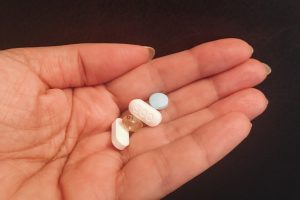Vaginal canals have the power to generate magic. They are the path through which life is built and birthed into the world, provide a lot of pleasure and happiness within our sex lives, and self-clean without additional medication or cleaning products.
All of this magic, however, has some drawbacks. For example, the vagina can become a breeding ground for yeast infection (also known as candidiasis) or conditions like bacterial vaginosis.
Most people are often unsure whether they have BV or the infection. With proper knowledge and guidance, you can clarify this.
This article will help you settle the BV vs yeast infection decision you need to make.
This article will reveal the difference between candidiasis and bacterial vaginosis, their symptoms, treatments, and causes. This way, you won’t leave any room for wrong self-diagnosis, leading to ineffective treatment.
BV: Overview
Bacterial vaginosis is a condition that occurs when there is an overgrowth of normal vaginal flora. It is the most common vaginal infection that affects women of reproductive age.
The condition most commonly presents as a vaginal discharge above normal levels and has a fishy smell. This discharge is usually thin and either white or gray.
While it increases the risk of getting STIs in women, it also increases the risk of early delivery in pregnant women.
Vaginal Yeast Infections: Overview
Yeast infection is a vaginal infection caused by fungus. It causes discharge, irritation, and intense itchiness of the vulva (the tissues at the opening of a vagina) and vagina.
Also named vaginal candidiasis, up to 75 percent of women become affected by vaginal yeast infection. Most women who experience the infection have at least two infection episodes.
Candidiasis aren’t regarded as STIs. However, if you are becoming sexually active for the first time, you are at a higher risk of getting infected. Although not proven at the moment, oral-genital sex is also speculated to increase the risk of having vaginal candidiasis.
Candidiasis shouldn’t be a serious concern as it can be treated with medications. Only those who have it on a repetitive basis -a minimum of four times a year- would benefit from more caution and extended treatment.
Do I Have a Yeast Infection or BV?
To understand whether you have candidiasis or BV, learning about the differences can help immensely.
Vaginal yeast infection and vaginosis come with three different symptoms. Try to identify the symptoms to determine the condition you are suffering from.

Differences between BV and Yeast Infections
BV can create a typically thin vaginal discharge with a white, yellow, gray, or greenish hue.
Bacterial vaginosis doesn’t cause redness or inflammation around the vulva or vaginal opening.
BV doesn’t cause pain but creates unease. You might have candidiasis if you experience a burn or pain during sex.
Candidiasis discharges are usually thick and clumpy. They are white, and they smell like cottage cheese.
Unlike Vaginosis, the “fishy odor” is nonexistent in yeast infections. There is no specific odor that belongs to candidiasis at all.
BV vs Yeast Infection Symptoms
BV and candidiasis are forms of vaginitis that usually create immense discomfort. Although they have some common symptoms, key differences help us detect what we are dealing with. Knowing the difference and determining which one you are suffering from is very important as it will help you understand what type of treatment you should seek.
The most common difference of BV vs yeast infection is the discharge color. What are the other symptoms for each? Let’s find out.
Symptoms of Yeast Infections
- Discomfort or pain
- Burning sensation during intercourse
- Burning sensation when urinating
- Vaginal opening and vulva becoming swollen/red
- Clumpy, thick, white vaginal discharge
- Itchiness
Symptoms of BV
- A Fishy odor that becomes stronger when menstruating or after sex
- Sense of burning while urinating
- Itchiness
- Discomfort
- Thin discharge which is yellow, gray, white, or even green
Causes of BV and Yeast Infection
Bacterial vaginosis is bacterial, and candidiasis is fungal.
Candidiasis results from an overgrowth of Candida fungus, while BV results from the overgrowth of a specific kind of bacteria in the vagina.
Bacterial Vaginosis
Vaginal pH change has the potential to trigger BV. If your pH level becomes unbalanced, a specific bacteria that naturally grows inside your vagina can declare its authority and end up causing BV. This bacteria is mainly known to be Gardnerella vaginalis.
There are various reasons your vaginal pH balance can get messed up: hormonal changes that come with menopause, pregnancy or menstruation, douching or excessively and intensely cleaning your vaginal area, or having intercourse with a new partner can cause an imbalance in your vaginal bacteria, leading to Vaginosis.
Although there is more than one cause for both, when it comes to BV, the most common cause is douching.
Yeast Infection
This infection finds the ground to develop when an overgrowth of Candida fungus is seen in the vagina. This overgrowth of fungus can be caused by:
- Birth control pills,
- Antibiotics,
- Hormone therapy,
- High blood sugar,
- Pregnancy
Candidiasis isn’t regarded as an STI (sexually transmitted infections). Research has proven that sexual activity can be a trigger to its development. However, we are still not one hundred percent certain about this connection.
Treatment of BV vs Yeast Infection
Antibiotics usually treat BV. Some antibiotics used in the treatment of BV can be listed as follows:
- Clindamycin,
- Metronidazole,
- Tinidazole.
Treatment of yeast infections is commonly made with antifungal medications. Some of these medications are:
- Fluconazole,
- Miconazole (an over-the-counter medication).
If the treated infection is severe, taking antifungal medication may need long-term dedication. Alternatively, particular treatments can be chosen over meds to treat the infection.
If itchiness or discomfort caused by BV or candidiasis doesn’t improve over time, it might be better for you to get a pelvic exam to check whether a more severe issue needs to be treated. To make a diagnosis, your gynecologist may test your vagina’s PH level to determine what you are suffering from.
Importance of Proper Diagnosis to Ensure Proper Treatment
Because the treatment of BV and candidiasis differs, it is important to get the right diagnosis to figure out which one you are dealing with.
While BV will need to be treated with antibiotics, candidiasis needs antifungal treatment. There are also alternative forms of treatment that will help you with the two conditions. The easiest way to find out which one is ideal for you is to consult with a doctor and leave it in the hands of an expert.
What Are the Consequences of Ignoring a BV or candidiasis?
BV does not cause any additional health problems. However, BV will likely increase your risk of sexually transmitted diseases such as herpes, gonorrhea, chlamydia, and HIV if left untreated.
On the other hand, if you don’t treat yeast, it will most certainly create much greater discomfort and disorientation in your daily life. Itchiness, inflammation, and redness around your vagina can become worse. In addition, if you can’t stop scratching, the skin in this area may become broken, open, or raw.
Tips for Avoiding Bacterial Vaginosis and Yeast Infections
You can do certain things to lower your risk of getting a BV or yeast infection.
To avoid BV, here are tips you can follow:
Keep your vaginal pH balanced: The vagina is a self-cleaning organ. You don’t need soap to clean it; it knows what’s best for it. Just use warm water and clean the outside of your vagina. Keeping the area cool with cotton or cotton-lined underpants will also help.
Don’t douche. Just don’t. Douching is an aggressive cleaning attempt, and it upsets the balance of bacteria in your vagina. So even medical professionals insist on it: do-not-douche.
Don’t have sex. This is easy to recommend if you prefer staying sexually passive. Ironically, you can still get BV without being sexually active. However, research shows that sex can become a trigger to having BV.
Limit your number of sex partners. Research suggests that the number of sex partners is directly proportional to the risk of getting BV.
The precautions you should take when preventing yeast infections aren’t that different. Below are seven tips to prevent infections:
- Avoid using any scent diffuser on the vaginal area, vaginal douches, and scented tampons
- Refrain from wearing tight pants and jeans
- Wear cotton underwear that won’t irritate your skin
- Keep yourself clean and dry
- Reduce stress, relax and take it easy
- Practice quality personal hygiene
- Consume yogurt with live cultures

Frequently Asked Questions
Sadly, you can. If you are experiencing any symptoms of BV or yeast infections, or all symptoms they each have at the same time, then it might be a sign that you need medical attention. The sooner, the better.
BV can only be passed onto someone that also has a vagina. So, in this case, BV can only be transmitted between sex partners who both have a vagina. Candidiasis, however, can be passed onto any sex partner. Therefore, although said to be very rare, it is possible.
BV and yeast infections are the top two most common vaginal infections. However, the infection is even more common than BV; three out of four women experience it throughout their lifetime. And, do so more than once!
The critical difference between the two is the odor. While yeast infections cause no particular smell, BV creates a fishy odor. The second detectable difference is the texture and color of the vaginal discharge that the two create.
While discharge with candidiasis is clumpy and white, discharge with BV is thin and has a gray, white, yellow, or greenish tone.
Get Help With Doctor Alexa
Regarding BV or candidiasis, no such health problem comes with an instruction manual. Professional guidance is necessary.
Any health problem can harm your mental or physical health and overall well-being when not handled properly. In addition, it can give you stress, leading you to question what treatment options you can implement to heal from your condition.
Doctor Alexa is here to help you make things easier. Medical health has never been this accessible.
We give you complete control of your health and provide effortless ways to access healthcare services from the comfort of your home. Quality health treatment is made possible with our compassionate healthcare provider team.
Our goal is to provide affordable, world-class healthcare services and a patient experience that showcases excellence. You deserve nothing less.
To explore the options of getting the proper treatment you want in an affordable way and from the comfort of your home, reach out to Doctoralexa today.





